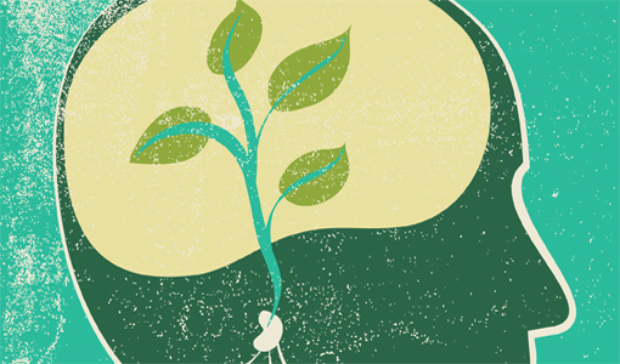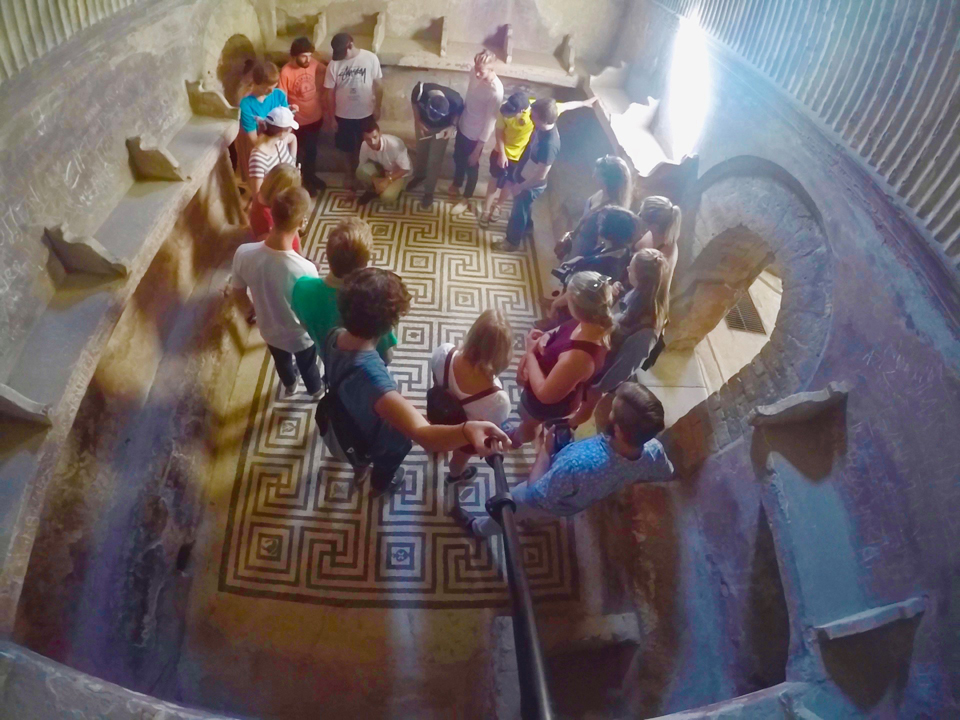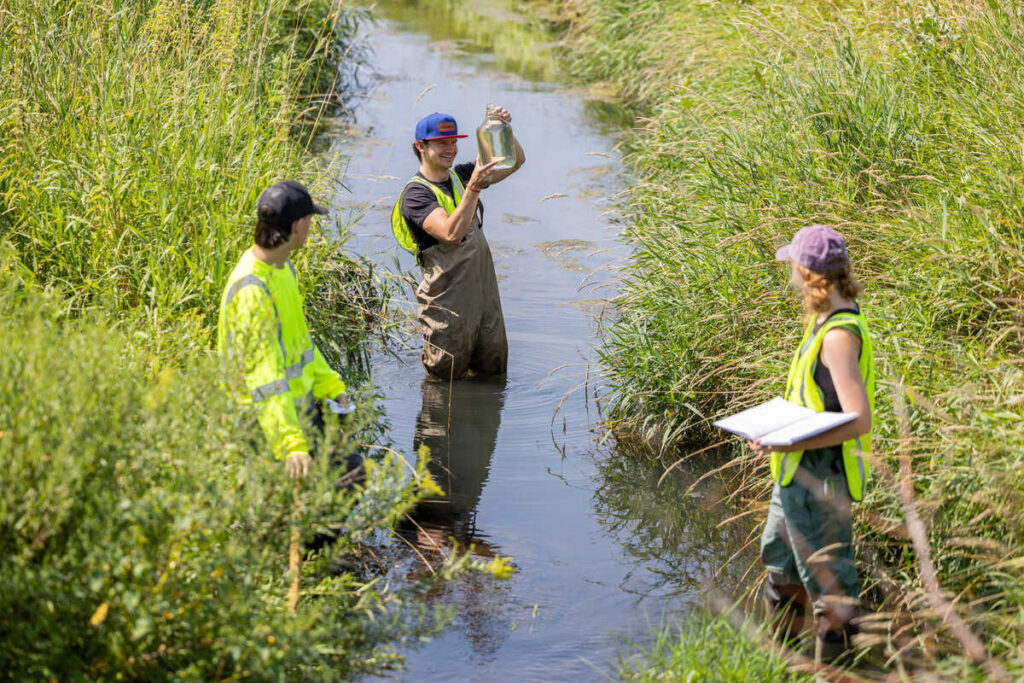So, a social psychologist, a cognitive psychologist and an industrial psychologist walk into the woods … and what emerges is a strong research collaboration that links psychology with one of the most significant challenges of our time – solving environmental problems
The fundamental cause of all “environmental problems” is human behavior. These problems are happening because many of the ways humans fulfill their needs (and wants) are incompatible with the natural processes that maintain ecological integrity. As experts in human perception, learning, emotion, thinking and behavior, psychologists will serve a crucial role in redirecting our ecologically destructive trajectory and promoting a sustainable future.
The relevance of psychology to environmental issues is something even colleagues in our discipline only recently have begun to recognize. “Conservation psychology” refers to basic and applied research with the goal of promoting a sustainable future. We tend to refer to ourselves as conservation psychologists but have all served as officers of Division 34 (until recently called Population and Environmental Psychology) of the American Psychological Association. We have published in the Journal of Environmental Psychology and we are all on the editorial board of Ecopsychology and have published in that journal as well. Whatever it is that we do – conservation psychology, ecopsychology or environmental psychology – we are known among our colleagues nationwide as the Minnesota Green Gals.
We each have lengthy autobiographical narratives of how we became inspired to bring environmental issues into our professional lives. More important is the story of how we became the Green Gals, our collaborative team of the past seven years. Elise Amel and Britain Scott first began a conversation about doing green research together in 2001 while sipping hot cocoa amidst clouds of cigarette smoke in the Café de Flore in Paris. Teaching a J-Term abroad course that was exclusively sited in urban settings (Paris and London), inspired in them a sense of urgency about the environmental crisis. Meanwhile, Manning was living in Germany, where she had been working for several years in a research position at the University of Hamburg. Although she, too, was immersed in urban Europe, she was surrounded by examples of environmentally progressive practices and became interested in environmental research conducted by German psychologists. When she moved back to the United States with her family in 2003, Manning was eager to find like-minded colleagues. Through community networks, she tracked down Scott and came knocking on her office door. Scott took Manning down the hall to meet Amel, and a research program was born.
Following our values and passions was not risk-free. Such significant changes in the direction of our research required substantial time investment in uncharted territory. Conservation psychology was not the area of expertise for which any of us were hired by St. Thomas. The work seemed fringy from a traditional psychology perspective. Luckily, in the years since we’ve engaged in this work, St. Thomas has committed itself publicly to similar ideals and action. In 2008 Father Dennis Dease signed the American College and University Presidents’ Climate Commitment with the goal of achieving carbon neutrality at St. Thomas by 2035 and making sustainability a priority in student education. The Board of Trustees approved a strategic priority under Catholic Identity pledging that St. Thomas will “cultivate an ethic of environmental stewardship, and will integrate principles of environmental sustainability across the curriculum and in co-curricular activities in order to educate students to appreciate their roles and obtain tools for leadership and innovation in care for God’s Creation.” We are grateful that what we study is fully supported by the university.
To adequately address climate change, some organizations talk about the importance of reducing carbon emissions 80 percent by 2050, while others talk about the equivalent 2 percent per year until 2050. Which would motivate you?
Working With the Minnesota Pollution Control Agency
Students find this work fascinating and relevant (which is handy since we rely on them for data collection at large public venues). Over the years we’ve worked with dozens of student researchers who have scouted potential public data collection venues, run lab experiments, reviewed literature, co-written papers, presented at professional conferences and earned research grants. Students are able to jump in at times when faculty are overwhelmed with other tasks that would otherwise bring the research to a grinding halt. Even though few of our students go on to graduate work in conservation psychology (especially since there are not yet any graduate programs specific to this area), we all benefit from the work we’ve accomplished together.
Our most extensive community collaboration, with the Minnesota Pollution Control Agency, has been both synergistic and rewarding. We’ve collected data for them at the Living Green Expo and the Minnesota State Fair (nestled between the lumberjack field and the Jacuzzi sales tent). Based on our findings and knowledge of psychology, we’ve suggested strategies for engaging folks at their events to increase sustainable behavior (e.g., practice loading a bike onto an MTC bus, on-site registration for wind-source power and junk-mail reduction). In turn, we get to ask large groups of everyday Minnesotans to participate in our research projects. We also have collected data in other public venues, including the Rondo Days and Grand Old Day street fairs and during a rally on the steps of the state Capitol.
Survey-style research in the field has its challenges (e.g., persuading people to participate, confronting illiteracy) and lacks the comfortable control of laboratory experimentation, but it gives us access to a more diverse population of participants than is typical of most psychology research (which is conducted primarily on college student samples). It isn’t always easy to work outside of the ivory tower, but we believe that application is a vital component of conservation psychology.
It is important to us that we work toward the common good in collaboration with undergraduate students and community partners. It is not only fulfilling but consistent with the mission and values of St. Thomas. We’d like to share some of our recent research findings to give you a flavor of the diverse set of questions psychologists address.
Research HighlightsHow Goal Setting Applies to Climate-Related Behaviors
One robust finding in psychology is that people accomplish more when they set specific, challenging, manageable goals rather than vague “do your best” goals or no goal at all. We expected this same pattern for environmental behaviors, and so we have investigated how goal-setting affects people’s sense of self-efficacy when they are trying to become more sustainable.
To adequately address climate change, some organizations talk about the importance of reducing carbon emissions 80 percent by 2050, while others talk about the equivalent 2 percent per year until 2050. Which would motivate you? Our results show that people who are trying to live more sustainably do not tend to distinguish between these, believing both are good goals. On the other hand, folks who have not really contemplated living differently find the 2 percent goal more compelling. Another distinction is that, when given a choice of the two goals, people who choose the 80 percent option do so because they sense an urgency that is not represented by the 2 percent goal, while those who choose the 2 percent goal think it is more feasible. Both the 80 percent and 2 percent goals are still what we would consider vague, or distal, goals and people respond to them by thinking they need to learn new skills, which can be a big barrier to behavior change. When more detail is provided, however, such as replacing 30 miles of driving per month with combining trips, taking public transportation, biking, carpooling or walking, people feel like they already have the skills to engage. So, what we know about goal-setting applies to climate-related behaviors.
Can Message Framing Make Climate Change Relevant?
The way an idea is presented makes a difference in how we react to it and what our brains do with it. Variations in source, context and emphasis all can affect how we respond to the very same message. For example, imagine turning on the radio and hearing someone promoting conservation. How would you respond to her message if she was identified as an “environmentalist”? Would you respond the same way if she were called a “concerned citizen”? Our research suggests not.
One of our recent framing studies presented information about climate change. For most Minnesotans, climate change feels like a distant issue. Though the scientific facts tell us it is happening, we have only an intellectual understanding, not an experiential one. Without experience, it is hard to feel that climate change is personally relevant. Thus, we examined whether framing could make climate change less psychologically distant and more personally relevant. We created a scenario describing climate change impacts and varied (1) the geographic distance described (in Minnesota versus in Kenya) and (2) whether or not the focus was on humans (people versus an important bird species). We thus had four scenarios describing climate change impacts on (1) people in Minnesota, (2) people in Kenya, (3) loons in Minnesota and (4) flamingos in Kenya.
Our results were intriguing. As we expected, when the setting was Kenya, participants were more alarmed by the scenario with people than the one with flamingos; however, when the setting was Minnesota, participants felt less psychological distance from climate change (and were more willing to make a donation to help) when the scenario described loons rather than people! One possible interpretation is that reading about negative climate impacts to us and our loved ones is uncomfortably threatening, so participants buffered themselves emotionally against this message. We are designing a follow-up study to test this hypothesis.
Loving nature does not require understanding natural systems or how our actions affect those systems. On the other hand, living sustainably in nature does require such an understanding.
Humans’ Connection to Nonhuman Nature
Ecopsychologists propose that connection to nonhuman nature is good for mental health – and good for the health of the planet – because it keeps us mindful of who we are and of the ecological systems on which we rely for life support; however, contemporary, urban-industrial lifestyles create physical distance, and, therefore, psychological distance, between people and nonhuman nature. The result, they say, is that we find ourselves feeling lost, anxious, stressed, depressed and unfulfilled because we are out of touch with our natural rhythms, needs and identities. We also behave in ecologically inharmonious ways because we are several steps removed from basic realities such as the sources of our food and origins of the raw materials required for our shelter, tools and clothing. In recent years, several researchers have devised measures for assessing individuals’ sense of connection to nature to test these ideas. In our work on this topic, we have identified and attempted to fill a gap concerning the way connection to nature is conceptualized and measured.
A consistent theme running through various researchers’ conceptualizations of connection to nature is that being connected involves both one’s sense of identity and one’s emotions. The more one defines and experiences oneself as part of nature, the more empathy one should feel for other living things and this should, therefore, be positively correlated with pro-environmental attitudes and behaviors. Thus, the self-reporting designed to measure connection to nature focuses on people’s feelings. The problem that we see with this is that humans’ connection to nature is not merely spiritual nor emotional – it is a genuine physical link. Without nonhuman nature, we do not survive. The environmental crisis does not just jeopardize our sacred places, our favorite getaway spots or the scenic landscapes and beloved critters that we like to photograph – it threatens our ability to feed, clothe and shelter ourselves. Although an affective or spiritual connection to nature may be the best that most of us urban-dwellers will achieve, we are not convinced that it is sufficient to inspire environmentally conscious decisions. Loving nature does not require understanding natural systems or how our actions affect those systems. On the other hand, living sustainably in nature does require such an understanding.
This is why we devised a new measure that we call “Participation in Nature” (PIN). Items on the PIN describe engagement in the kinds of activities that were routine in ancestral hunter-gatherer groups (e.g., foraging for wild edibles or shelter building). We hypothesize that by participating directly in the fulfillment of our survival needs, we develop a practical, respectful attitude toward the rest of the natural world that is neither unrealistically reverent, nor dangerously domineering. We wondered, therefore, whether individuals who participate in nature more would report greener attitudes and behaviors overall.
To explore this, we collected data from people at the Minnesota State Fair and at the Lake Superior Traditional Ways Gathering. The Gathering is a weeklong encampment on pristine Anishinabe lands where participants offer and attend workshops on earth-living skills (e.g., hide tanning, basket making and fire starting). Collecting data at the Gathering was our most dramatic departure from traditional psychology research; we used to think that only anthropologists got to collect data tentside. We discovered that PIN was significantly and positively correlated with other measures of connection to nature and that both predicted pro-environmental behavior. As expected, the Gathering sample was “greener” overall than the State Fair sample; however, in both samples, there were a few individuals (almost all men) who scored high on PIN but low on other measures of connection to nature, and there were a few individuals (almost all women) who scored low on PIN but high on other measures of connection to nature. The first group reported significantly less pro-environmental behavior than the second group, suggesting to us that, like other forms of connection to nature, PIN may not be sufficient, nor necessary, to inspire ecologically friendly behavior.
A Personal Note
Over the years our collaboration as conservation psychologists has strengthened our friendships and brought our families together. While growing our research program, we’ve been raising children, too: six daughters, two apiece. Each summer our families attend the Traditional Ways Gathering on the shores of Gitche Gumee. We also went on a dogsled and snowshoe adventure in the Boundary Waters Canoe Area Wilderness in December. Between excursions, we feast together on bounty from our gardens and foraging expeditions. We know that our daughters benefit not only from the supportive community we have formed with each other, but from watching their mothers do good works while balancing career and family.
Read more from CAS Spotlight







